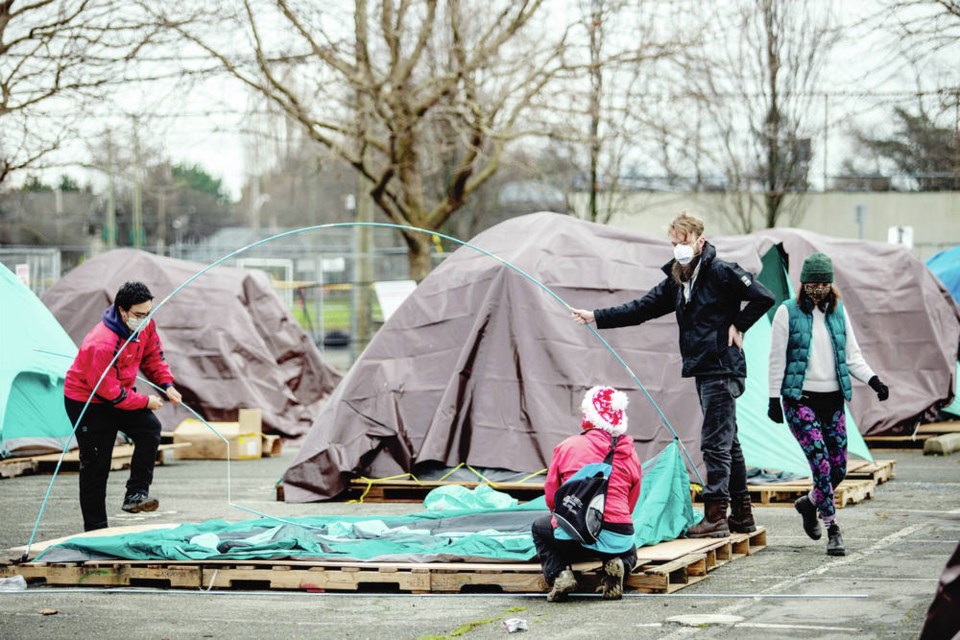There were other stories in 2020, you know.
Wildfires in Australia. Tiger King on the tube. A Zamboni driver beat the Leafs. Justin Trudeau skated free of the WE affair (it might have helped that we were distracted by the toilet paper panic), though we’re not sure we can forgive the beard. Trump got dumped, but not before making Four Seasons Total Landscaping totally famous.
Lots of grim news: The opioid crisis continued unabated; by December, B.C.’s death toll had reached 1,548. In April, 22 Nova Scotians died in the worst mass murder in modern Canadian history. In May, Capt. Jenn Casey died after ejecting from a Snowbirds jet in Kamloops. Kobe Bryant was killed in an air crash, too.
Others we lost in 2020: John Prine, Ted Hughes, Eddie Van Halen, Ruth Bader Ginsburg and a host of Hollywood stars from Sean Connery to 104-year-old Olivia de Havilland, whose father was once a Victoria chess player of note. Pandemic or not, life — and death — goes on.
Here are 10 non-COVID stories that Vancouver Islanders will remember from 2020.
1. Homelessness
In Victoria, no issue has sucked up more political oxygen this century than this gooey ball of affordability, mental illness, addiction, crime, disability and poverty.
This was the year it reached another level, though, the spread of encampments — Beacon Hill Park, Topaz Park, Central Park, Cecilia Ravine, Centennial Square — spawning new levels of anxiety, compassion and hostility in response.
No, this was not just a Victoria phenomenon. From Nanaimo’s Wesley Street to Duncan, Sooke, Kelowna and Prince George, this story repeated itself. It felt particularly acute in the capital, though, with the shift in the streetscape magnified by the disappearance of tourists and downtown office workers.
City council, reasoning that homeless people had nowhere to go, decided not to enforce a bylaw requiring tents to be dismantled during the day. It also temporarily turned Save-On Foods Memorial Centre into a shelter for 45.
B.C. Housing added to the stock of hotels converted to temporary housing, buying the Comfort Inn for $18.5 million in May, purchasing Paul’s Motor Inn for close to $15 million in June, and leasing the Travelodge and Howard Johnson on Gorge Road. From May into the fall, more than 500 people were housed.
Not that everybody welcomed the attempts to accommodate the homeless. The Friends of Beacon Hill Park have sued to end 24/7 camping. When the idea of using empty Oak Bay Lodge was run up the flagpole, the flagpole was quickly chopped down. NIMBYism? Perhaps, but also predictable, given the stories of anti-social behaviour associated with camps and shelters.
Sometimes it takes a scene like that in Central Park, where tents floated in a sea of sodden misery after a freezing December rain, to remind us that this is a human tragedy that needs to be solved, not a nuisance that needs to be eradicated.
2. Race
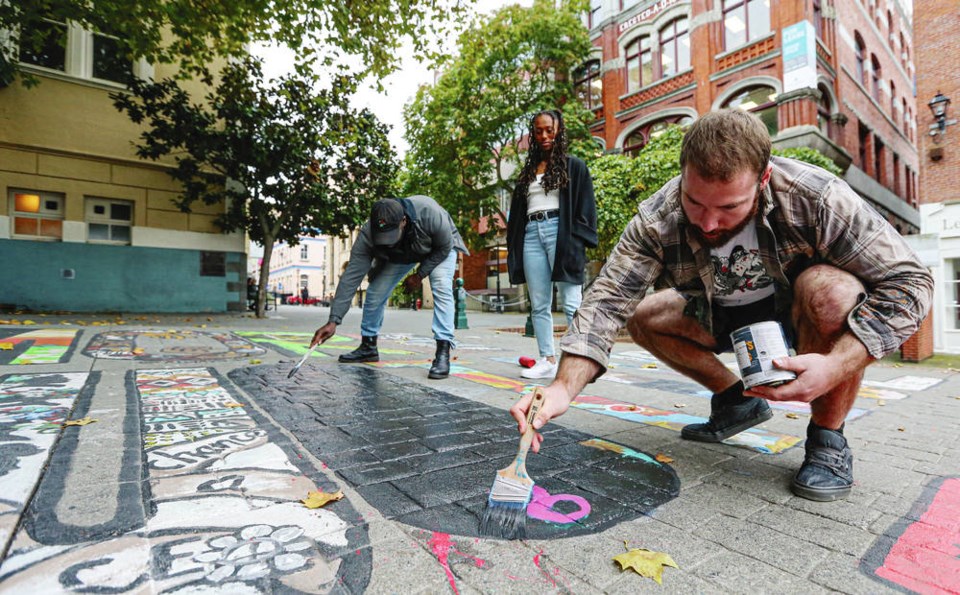
After George Floyd died under Minneapolis police officer Derek Chauvin’s knee in May, a wave of anger swept across and beyond the U.S., the Black Lives Matter movement reaching all the way to the streets of Victoria.
Were we finally going to seriously confront the role of race in society? Maybe, though when the focus became a Bastion Square mural that included the acronym ACAB — All Cops Are Bastards — it felt like we had lost the plot.
That’s too bad. While four in five of us might rarely think of the colour of our skin (this was the year we learned to work our mouths around the phrase “white privilege,” as though it belonged to a foreign language), others don’t get to forget.
Case in point: During the provincial election campaign, a couple pulled over in Saanich to hurl racist slurs at Indo-Canadian Liberal candidate Rishi Sharma. A video shot just afterward showed the shock of a couple of white campaign volunteers. “I’ve never experience something like that,” one said. “I see it all the time,” replied Sharma’s brother Muneesh.
Meanwhile, in the Lower Mainland, the “Asian flu” was used as an excuse to attack Chinese Canadians.
Not experiencing or witnessing racism yourself doesn’t mean it’s not a reality for others.
3. Pipeline protests
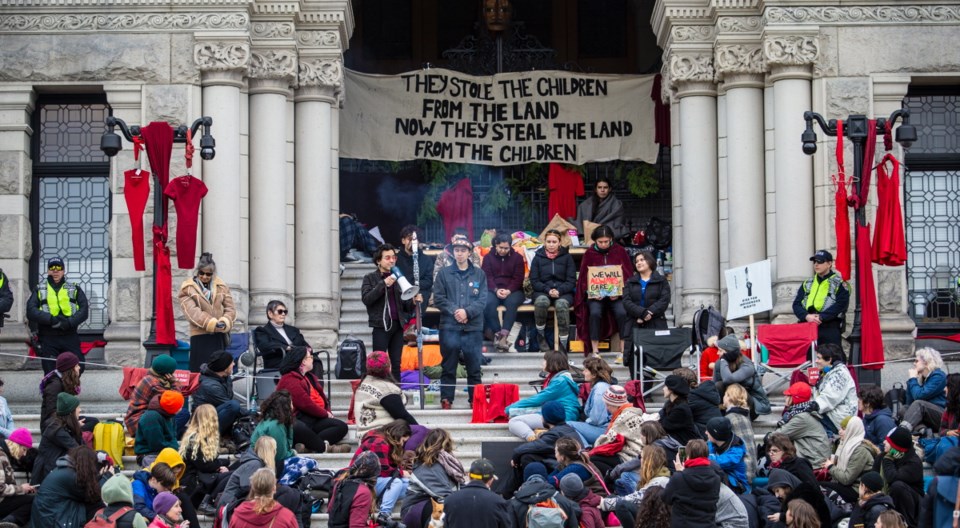
When opponents of the Coastal GasLink natural gas pipeline showed up at the premier’s Langford house in February — he wasn’t home, but his wife was — they invoked the name of the Wet’suwet’en. OK, but which Wet’suwet’en? It’s not as though there was a consensus within the northern B.C. first nation. Some hereditary chiefs opposed the pipeline, but elected councillors favoured it. Outsiders tended to cherry pick, siding with those Wet’suwet’en whose views meshed with their own agendas.
Pipeline protests — and, more broadly, the question of Indigenous rights — looked to be the news story that would dominate 2020, particularly after rail blockades disrupted Canada’s supply chain in February. In Victoria, bridges and the highway leading to the Swartz Bay ferry terminal were briefly blocked. On Feb. 11, MLAs showing up for throne speech found legislature entrances blocked by hundreds of protesters. Three days later, government offices were picketed throughout the capital. A protest camp on the legislature steps remained until early March.
Then the pandemic arrived.
4. Camelot on the Peninsula
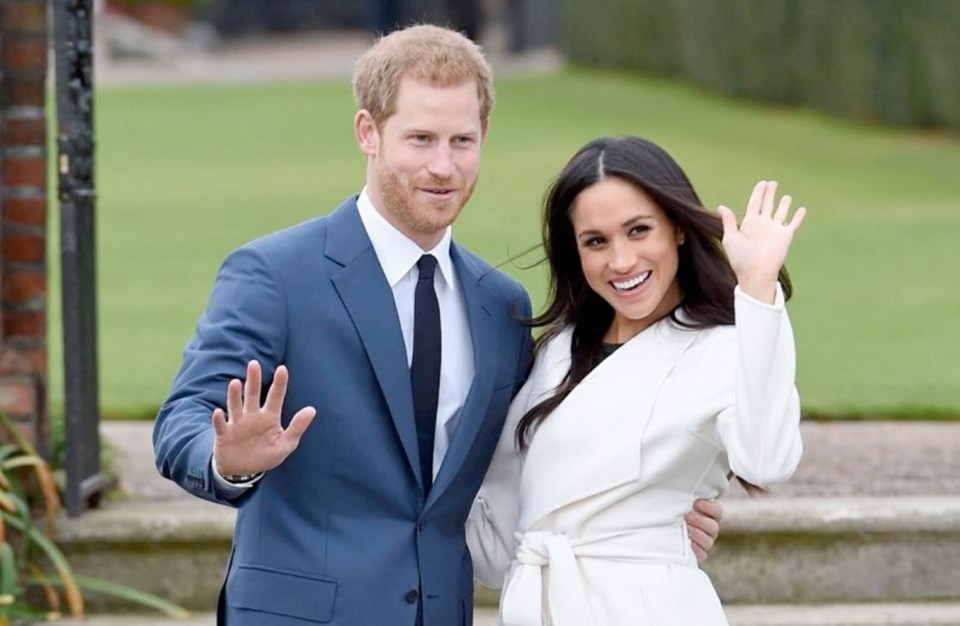
Prince Harry, Meghan and baby Archie managed to quietly hang out in Milles Fleurs — a secluded, four-acre North Saanich waterfront estate featuring an 11,416-square-foot mansion — for a month before the Times Colonist reported they were here last Christmas.
Then the floodgates opened. As what was supposed to be a a six-week stay stretched beyond three months, and the clamour over Megxit grew, news media from around the world poured in — only to be stymied by local residents. Neighbours proved stubbornly protective of the family’s privacy, meaning the (former) royals could go tromping through Horth Hill park or dining with David Foster at Il Terrazzo without being pestered or outed. Meghan even called Saanich Peninsula water taxi owner Miles Arsenault to thank him for turning down the $150-an-hour business of a Japanese TV crew who had wanted to film the estate from offshore.
It all ended in mid-March when, with a pandemic-driven border lockdown looming, the three flew to California, reportedly on the private jet of Hollywood’s Tyler Perry.
“Harry absolutely loved life in Canada and has made no secret of how much he misses life there,” the British tabloid The Sun later quoted an insider as saying. “The time that he spent there with Meghan and Archie are probably the happiest he has ever been.
“Harry misses the pace of life there and the fact they were living in a really secluded place where they could be themselves, relax and enjoy life.”
5. Horgan’s gamble
How mad were British Columbians when John Horgan called a snap election in the middle of a pandemic? So mad that they gave him 57 of the legislature’s 87 seats and 68 per cent of the vote in his own Langford-Juan de Fuca riding. That’ll show him.
High in the polls thanks to their handling of the pandemic, the New Democrats’ gamble paid off, even costing the Liberals their lone Vancouver Island seat, Michele Stilwell’s Parksville-Qualicum riding.
The Greens, who won three seats in 2017, ended up with just two after the Oct. 24 vote. They also failed to break out of their south Island beachhead, saw their share of the popular vote slip and, most importantly, lost the balance of power they had enjoyed. Yet it was they who, under brand new leader Sonia Furstenau of Shawnigan Lake, exuded optimism post-election.
The Liberals, by contrast, carried the air of a once-powerful, now-aging hockey team aware of its need for a rebuild. No one was surprised to see leader Andrew Wilkinson pull the plug.
6. Death in Iran, memorials in Victoria
The year had barely begun when Trump ordered the assassination of a top Iranian general, which brought a retaliatory Iranian missile attack on a U.S. base in Iraq, which ramped up the threat of war, which on Jan. 8 led a trigger-happy Tehran anti-aircraft battery to mistakenly shoot down a Ukrainian passenger jet carrying 176 people, including 85 citizens or permanent residents of Canada.
Among the dead was 23-year-old Roja Omidbakhsh, a first-year student at UVic’s Gustavson School of Business, who had gone to Iran to spend the holidays with her family. Hundreds mourned her at memorials here.
The Iranian Revolutionary Guard admitted shooting down the Ukraine International Airlines plane shortly after it took off, mistaking it for a missile.
All those people killed, yet Canadians all but forgot about the tragedy after the pandemic hit.
7. Takaya the wolf
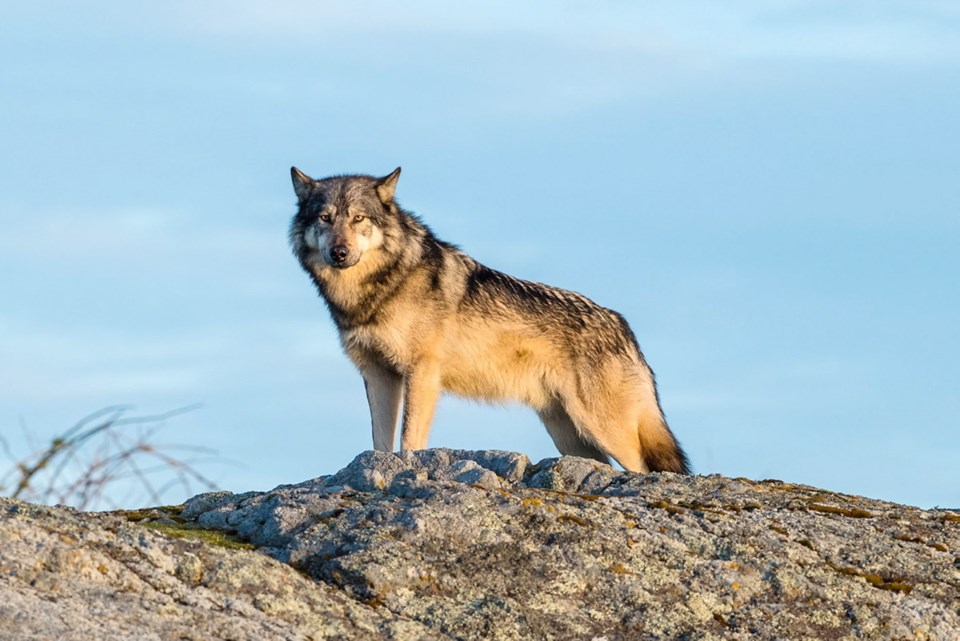
We were kind of thrilled when Takaya, the lone wolf of Discovery Island, showed up in Victoria late last January, running free in James Bay for a couple of days before being tranquilized by conservation officers.
But it was heartbreaking in March when a hunter killed the wolf — legally — near Shawnigan Lake, about 50 kilometres from where the animal had been released.
The death drew international news coverage and outrage. Takaya had been a bit of a rock star, the subject of a 2019 CBC documentary and a 2020 book by Victoria wildlife photographer Cheryl Alexander, who had spent seven years documenting the wolf’s life on the islets off Oak Bay.
But what about the other Vancouver Island’s other wolves? Some estimates say there are 250 of them, maybe 350. A couple of years ago, the province quietly expanded the wolf-trapping season on the Island, resulting in 29 of the animals being killed in 2018 and 16 in 2019.
8. The apocalypse
In mid-September, smoke drifting up from wildfires in the Pacific Northwest and California blanketed the south Island, leaving us with some of the worst air quality in the world.
How bad was it? Letter carriers suspended delivery. Police warned drivers of poor visibility. Schools stopped outdoor activities. Health authorities urged us to avoid strenuous exercise. Really, it was smoky as a newsroom in 1982.
The spooky, apocalyptic gloom persisted across southern B.C. for days on end, prompting us to vow to get super-serious about global warming. No, stop laughing, we really meant it this time — right up until the skies brightened and we went back to bingewatching Schitt’s Creek, which you have to admit was pretty awesome.
Whew, so nice to have that whole climate change thing behind us.
Tick, tock….
9. Free-flowing at last
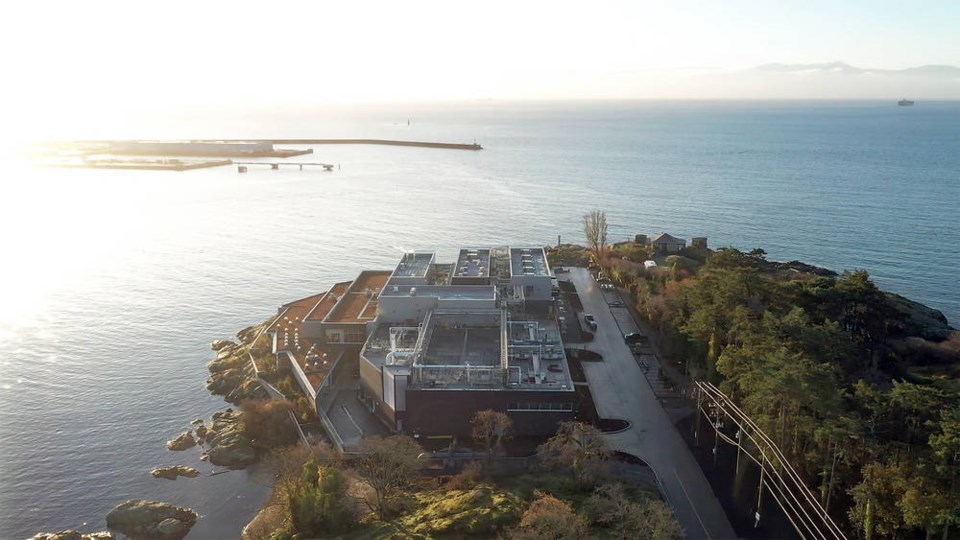
This must be how Bill Murray felt waking up at the end of Groundhog Day.
For decades, Victorians talked (and talked and talked and talked) about sewage treatment. Ditto for the Colwood Crawl. Nothing ever changed, though.
Then, in the space of a year, it did.
First, traffic began pouring through the $96-million McKenzie Interchange just before last Christmas, uncorking B.C.’s biggest bottleneck outside the Lower Mainland. The project’s second major milestone came in August when the loop connecting the highway to McKenzie opened. Construction-zone speed limits will remain as finishing work, largely landscaping, continues for the next few months.
Then we finally saw movement (as it were) on the sewage front when the McLoughlin Point treatment plant went online last month. While some still argue vehemently that the $775-million project was a product of politics, not science, it at least placated our American neighbours, who accused us of using their waters as our toilet.
As for the Mr. Floatie suit worn by activist James Skwarok, it now resides in the bowels of the Royal B.C. Museum.
It was tempting to make this No. 1 or No. 2 on today’s list, but….
10. Murder hornets
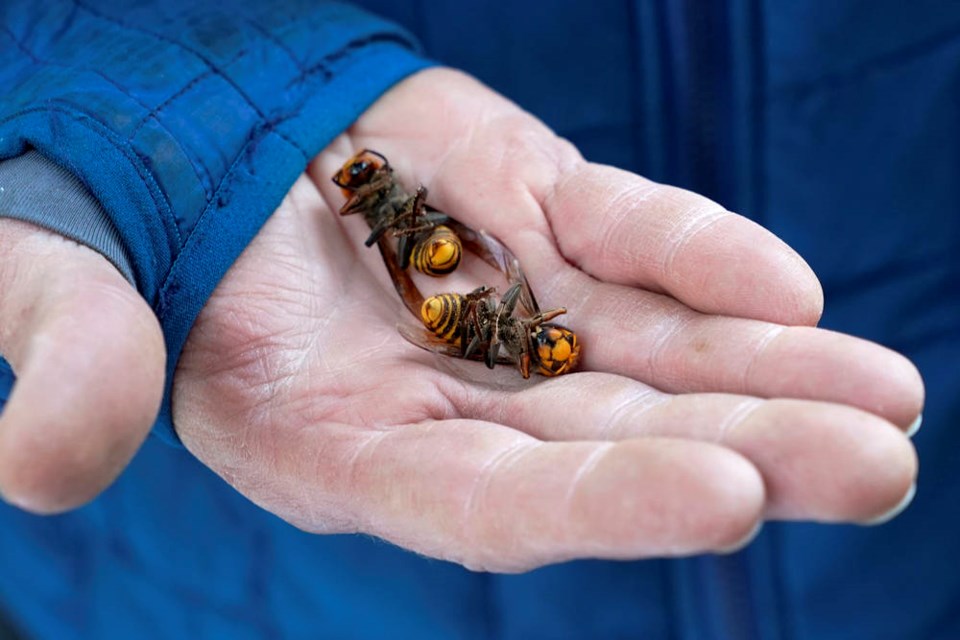
Things must be butt-clenchingly scary when something dubbed “murder hornet” is only the second-ghastliest new threat of the year.
OK, the giant Asian insects haven’t actually murdered anyone (really, whoever named them should win a branding award) but they are a serious threat to bees and they do give us the willies.
The discovery and destruction of murder hornets near Nanaimo in late 2019 was followed this year by a Hunt for Bin Laden-type operation that led to another nest being wiped out near the B.C. border at Blaine, Washington.
At least they gave us an excuse to fret about something other than you know what.
jknox@timescolonist.com
